Gordium, Citadel
Gordium: capital of ancient Phrygia, modern Yassihüyük.
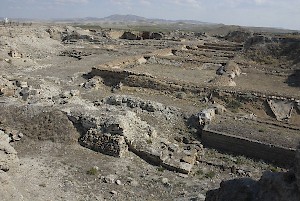
The citadel of Gordium, the capital of ancient Phrygia, which was already occupied in the final quarter of the third millennium BCE and flourished in the Hittite Age, is not very far from the river Sangarius, on its eastern bank. It has always been surrounded by an ancient wall, which dates back to the ninth or eighth century and was rebuilt in c.600 BCE. One of the gates, called "the Phrygian Gate" by the excavators, was the main access; flanked by two towers, it gave access to a number of buildings.
Within the citadel are a number "terrace houses", built in a straight line, and megara (great houses), four in number, made of natural stone and sun-dried bricks. They date back to the eighth century BCE, and are in the stratum that is visible today. The first one of these had interesting mosaics (shown below); the second one was the royal palace; the fourth one has been identified as the temple where Alexander the Great in 333 BCE cut the famous Gordian knot.
After Alexander, the citadel of Gordium became a Greek town, used by farmers. (The remains of the farms were excavated and are no longer visible.) This site was evacuated after the Roman invasion of this part of Anatolia in 189 BCE, but the people returned in the first century CE, occupying the western half of the citadel. This settlement was still in existence in the fourth century, but appears to have been abandoned after that.
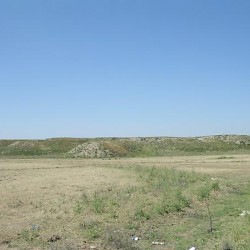 Gordium, Citadel from the north |
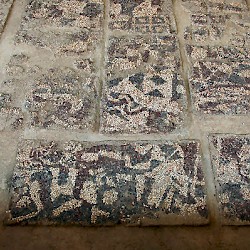 Gordium, Phrygian mosaic |
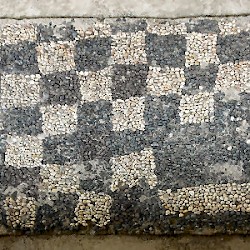 Gordium, Phrygian mosaic, detail |
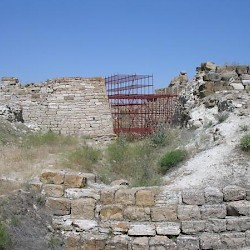 Gordium, Citadel, Gate |